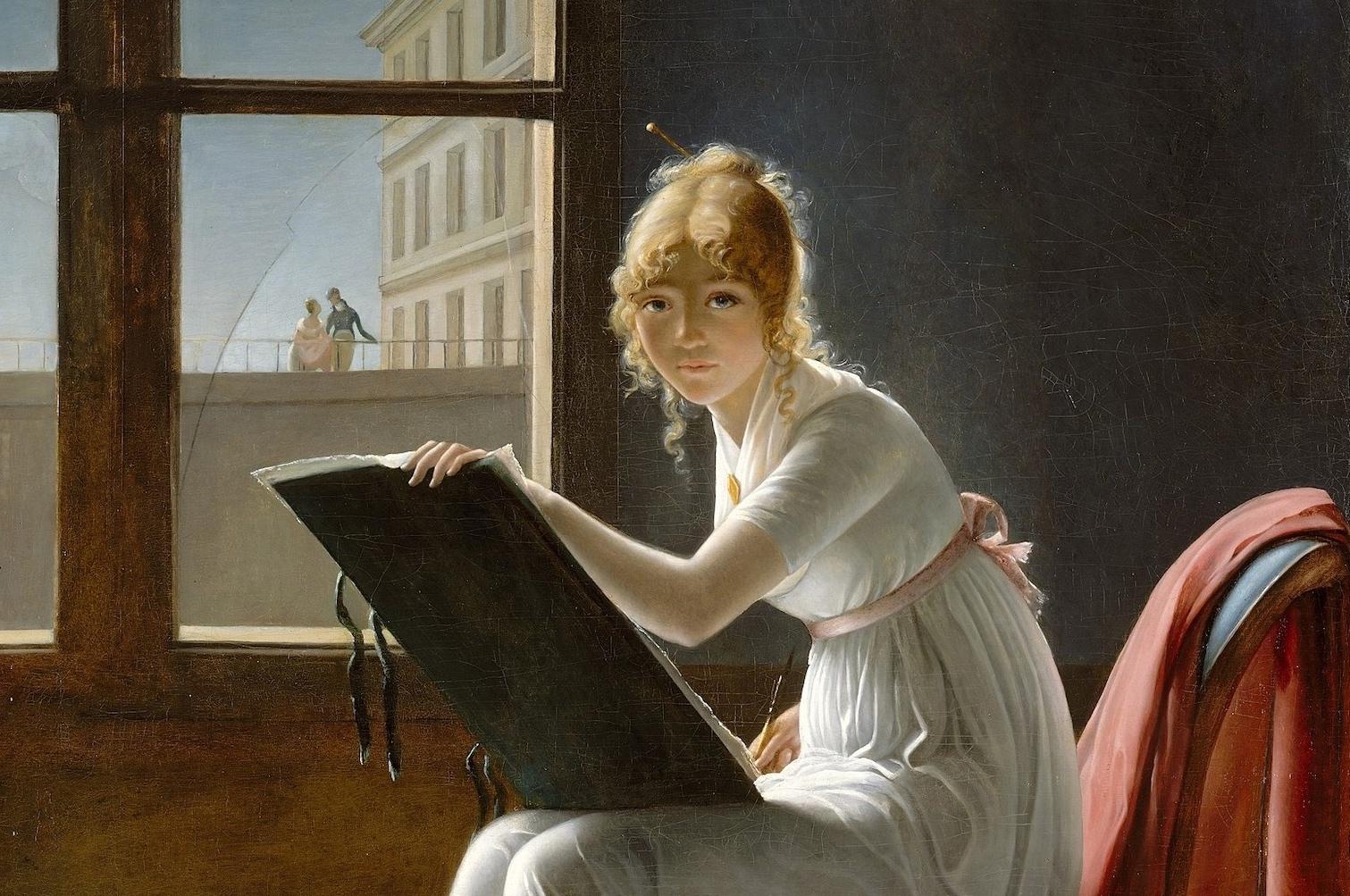
Marie-Denise Villers, Young Woman Drawing, 1801.
Neoclassicism, a Western cultural movement that spanned from approximately 1750 to 1850, impacted art and architecture well into the twentieth century. Coinciding with the rediscovery of the ancient Roman cities of Pompeii and Herculaneum, Neoclassicism was influenced by the writings of archeologist Johann Joachim Winckelmann, who considered Greek and Roman art the apex of perfection.
Focused on simplicity and symmetry—principles valued by classical artists, Neoclassicism was an antidote to Rococo and Baroque excess. Neoclassicists painted everything from ancient myths to contemporary events, portraying their subjects through the heroic lens of a classical style.
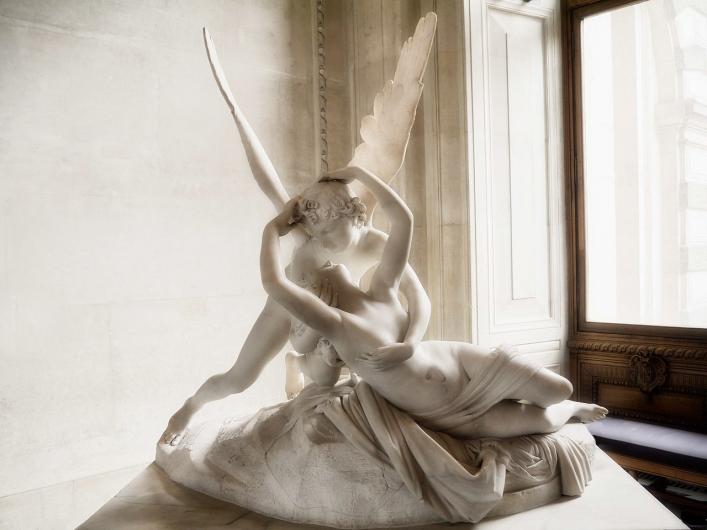
Antonio Canova, Psyche Revived by Cupid's Kiss, 1787.
Generally regarded as the greatest Neoclassical artist, Italian sculptor Antonio Canova (1757 – 1822) was incredibly talented and popular, creating work for all the courts of Europe. His masterpiece Psyche Revived by Cupid's Kiss, commissioned in 1787, captures these mythic lovers at a moment of passionate reconnection. Cupid, wings outstretched, embraces a semi-reclining Psyche, having just kissed her awake.
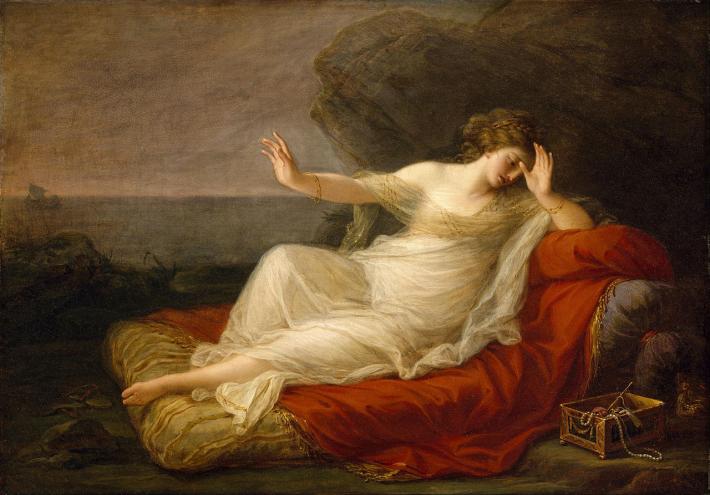
Angelica Kauffmann, Ariadne Abandoned by Theseus, 1774.
A child prodigy, Swiss painter Maria Anna Angelika Kauffmann RA (1741 – 1807), or Angelica Kauffman, was a highly successful painter based in London and Rome. Trained as her muralist father’s assistant, Kauffman learned about Renaissance masters and Neoclassicism. In 1768, Kauffman was one of only two women who helped found the London Royal Academy. In her painting, Ariadne Abandoned by Theseus, a pale young woman with long, dark hair and a rippling toga lies semi-erect on a divan, her face turned away in grief, arms out protectively.
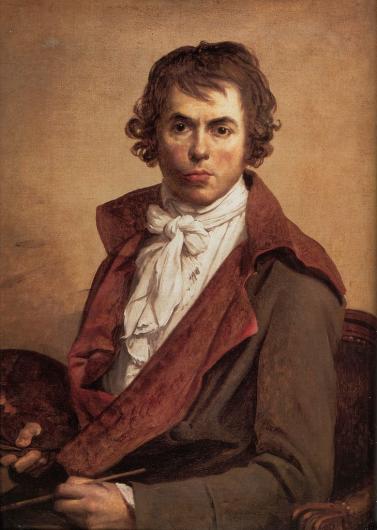
Jacques-Louis David, Self-Portrait, 1794.
An ardent supporter of the French Revolution, iconic French painter Jacques-Louis David (1748–1825) was famous for his historical paintings, whose austerity and stern patriotism made him a cultural hero. David was briefly imprisoned by Napoleon but returned to teaching art after being freed, influencing a generation of younger European artists. He painted his Self-Portrait while imprisoned.
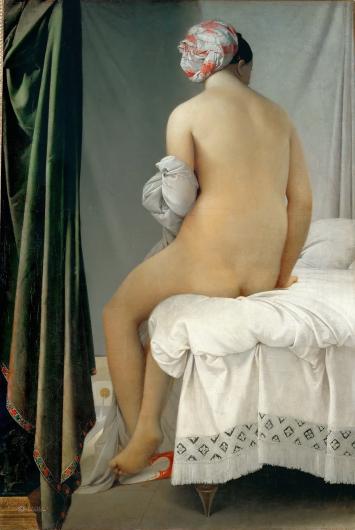
Jean Auguste Dominique Ingres, The Valpinçon Bather, 1808.
A student of David’s, Jean Auguste Dominique Ingres (1780–1867), defended rigid classicism and considered historical painting to be the highest art form. Ironically, Ingres is famous for his striking portraits and odalisques, such as The Valpinçon Bather or La Grande Baigneuse. His avant-garde composition style and bold use of color influenced later artists such as Degas, Picasso, and Matisse.
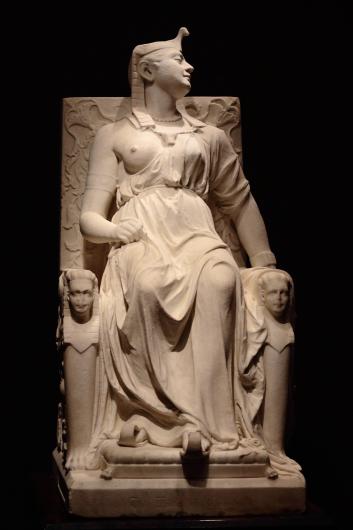
Edmonia Lewis, The Death of Cleopatra, 1876.
Edmonia Lewis ( 1844–1907), was the first known sculptor of African American and Native American heritage to achieve international fame. Lewis’ masterwork is The Death of Cleopatra, an almost 3,000-pound sculpture created in Rome that was shipped to Philadelphia for the Centennial Exhibition. Depicting Cleopatra at the moment of her death, Lewis’ majestic sculpture shocked viewers with its realism, as the Egyptian Queen unapologetically chooses death by asp.

Marie-Denise Villers, Young Woman Drawing, 1801.
From a family of painters, Marie-Denise Villers (1774 – 1821) was a skilled portraitist and exhibited in many Parisian salons. Her arresting painting, Young Woman Drawing, was once mistakenly attributed to Jacques Louis David. A young woman in a white dress sits with a drawing board positioned in her lap, looking intently towards the viewer, slightly backlit by the broken window behind her.
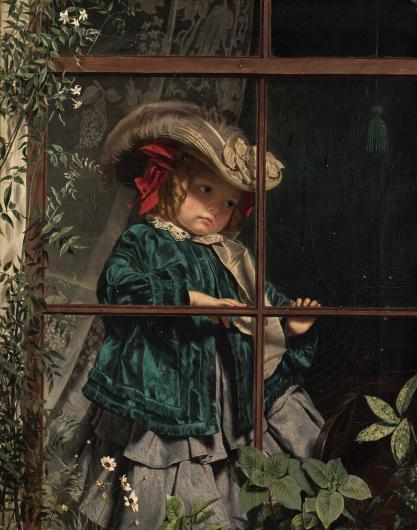
Sophie Gengembre Anderson, No Walk Today, unknown date.
French-born British artist Sophie Gengembre Anderson (1823-1903) specialized in genre painting of women and children, often in rural settings. A lithographer and portraitist, Anderson exhibited regularly, and her work continues to be popular. In 2008, her painting No Walk Today sold for a world record price of over £1 million at Sotheby's, making her the first Cornwall-based female artist to do so.
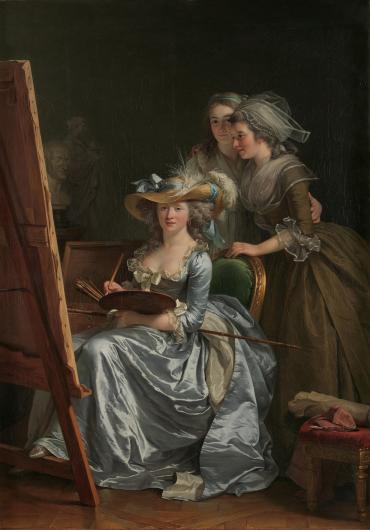
Adélaïde Labille-Guiard, Self-Portrait with Two Pupils, 1785.
French miniaturist and portrait painter Adélaïde Labille-Guiard (1761–1818), was a vocal advocate for women’s artistic education and opportunities. Exhibited at the Salon in 1785, her lifesize, full-length Self-Portrait with Two Pupils audaciously promotes female art education. An extravagantly dressed artist, facing the audience, sits at her easel, brush poised as she teaches the two younger women conferring behind her chair.
Megan D Robinson
Megan D Robinson writes for Art & Object and the Iowa Source.























